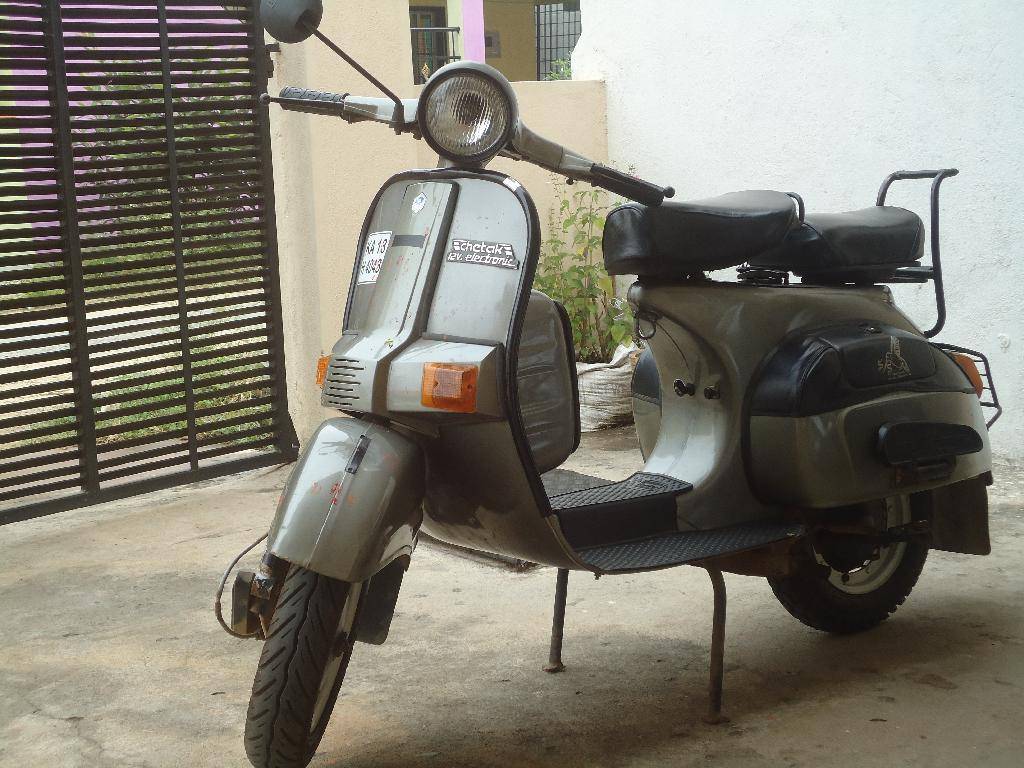Know Your Two-wheeler Brand: Bajaj Auto
Modified On Apr 6, 2020 07:10 PM By Praveen M.for Bajaj Pulsar 220
- 3505 Views
From making scooters to Pulsars and KTMs, here’s how Hamaara Bajaj has stayed relevant in the fast-changing two-wheeler world
Right from the start, Bajaj has been a very strategic manufacturer. From building geared scooters like the Priya and the Chetak to the Pulsars and now ushering in a new era of electric mobility, again with the iconic Chetak name, Bajaj is taking giant strides in establishing itself as a force to be reckoned with. It used to have ties with Kawasaki, is now looking to make bikes with Triumph and owns a sizeable chunk of KTM, truly establishing itself as a global brand. Here’s how the story of the world’s fourth largest two- and three-wheeler manufacturer went.
Illustrious Past With Scooters:

Bajaj Group was founded in 1926 by Jamnalal Bajaj. However, Jamnalal, being a disciple of Mahatma Gandhi, was actively involved in India’s freedom movement and was focussing more on the country. In 1942 his son Kamalnayan Bajaj took over the company and was able to fully concentrate on his family’s business after India’s Independence in 1947. Kamalnayan Bajaj then diversified his father’s business into different sub-brands manufacturing a variety of products.
So in 1959, Bajaj Auto obtained licence from Piaggio to manufacture the Vespa 150. Soon in 1970, Bajaj rolled out its 1,00,000th vehicle! Two years later, the legendary Chetak was born. It was essentially a more affordable version of the Italian scooter, and that made the Chetak one of the most sought-after scooters for personal transportation.
The tryst with Kawasaki:

In 1984, Bajaj Auto entered into a “technical assistance agreement” with Kawasaki to make motorcycles for the Indian market. We got bikes like the KB 100, KB 100 RTZ and the KB 125, venerable two-strokers that etched their places in the hearts of numerous enthusiasts.
Then in 2001, the Kawasaki Bajaj Eliminator came into the picture. It was the most expensive motorcycle from the brand at that time. Notwithstanding the pricing, the Eliminator formed the base for the popular Avenger series - giving India a taste of the quintessential American cruiser. Bajaj had a golden goose for commuters too in the form of the Caliber 115. Launched in 2003, it was a four-stroke commuter that was well known to offer a balance of decent performance and fuel efficiency.
The ties also introduced big bikes such as the Ninja 250, the Ninja 650 and the others followed soon thereafter.
Legend Of The Pulsar Series:

2001 also dawned a new era for Bajaj in the premium segment. That’s when the Pulsar 150 & Pulsar 180 were born. The kind of performance they offered made enthusiasts go absolutely gaga. Only 18 months later, Bajaj launched an improved version of the Pulsar with DTS-i technology and redesigned bodywork. Its target audience received the new model quite well, and Bajaj went on to sell over one lakh bikes in a month!

The following decade witnessed the launch of different iterations like the Pulsar 200, Pulsar 220F, Pulsar LS135 and the likes. These bikes came with regular updates to make them relevant in the face of ever-increasing competition. There were as many as 12 different Pulsars in the market over the years, and this sort of experimentation has helped Bajaj gain a deeper insight into the Indian two-wheeler market.
Making A Mark In The World:

In 2007, Bajaj joined hands with KTM and acquired a 14.5 per cent stake of the Austrian brand. It then grew to 48 per cent over the years, and the partnership finally bore fruit in 2012 when KTM introduced the 200 Duke. It offered absolutely stonking performance wrapped in a mouth-watering price tag of just Rs 1.18 lakh. Bajaj’s cost-effective manufacturing helped KTM grow leaps and bounds in the country. Here’s the full story about KTM’s history in India.
Bajaj didn’t just stop at this. The Pune-based bikemaker entered into a non-equity partnership with Triumph Motorcycles to make affordable premium bikes for emerging as well as developed markets across the globe. Their first product is likely to make its global debut in 2021.

KTM’s daughter company Husqvarna has also entered the Indian market in 2020. Its first products are the Vitpilen 250 and the Svartpilen 250, both of which are based on the existing 250 Duke. With new emission norms on the anvil, one of these motorcycles was recently spotted testing. Going forward, it’d be really interesting to see how Bajaj manages to let all these distinct brands, which will have bikes playing in a similar price segment, take their own share of the pie.
